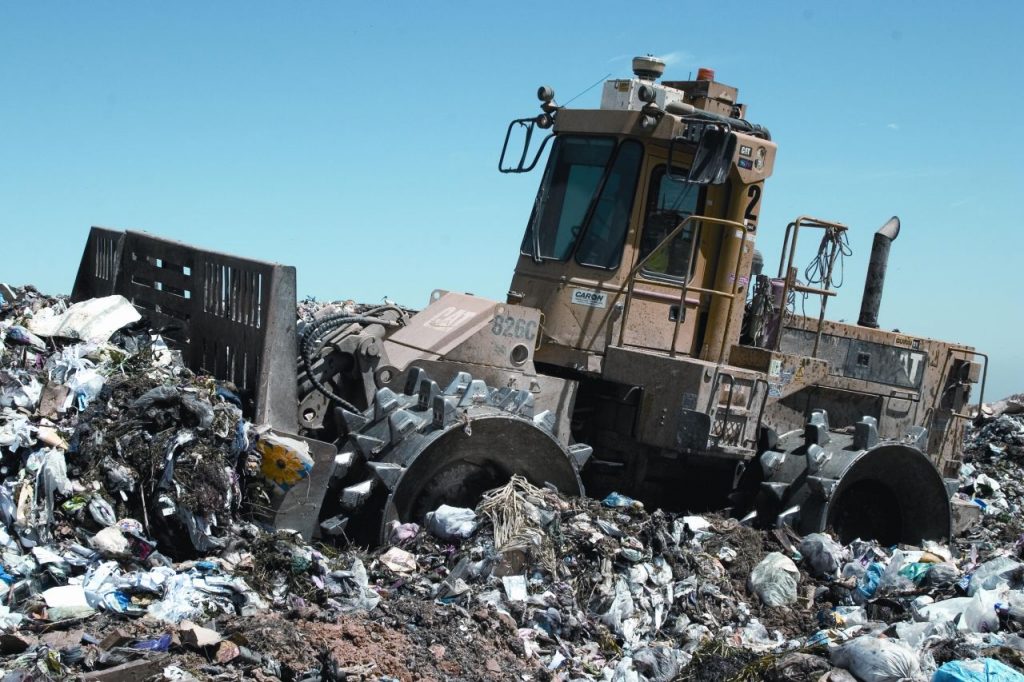
In the United States, plastic waste ends up in the landfill. Since China stopped importing recyclable waste from the West in early 2018, the United States has struggled to manage an ever-increasing surplus of garbage.
Until the beginning of last year, the United States exported without worrying about its recyclable waste towards China, like many European countries. Then Beijing abruptly changed its policy and stopped importing waste from the rest of the world as part of new pollution control measures. Part of the flows have been diverted to other countries in Southeast Asia such as Vietnam, Thailand, Indonesia or Malaysia, but these countries, submerged, in turn begin to reject shipments of plastic waste that they no longer have the capacity to process.
Preference for landfills
This reversal, which has upset the entire global waste industry, has particularly hit the United States, which had become dependent on China for processing plastics and papers. The country, which has no recycling objective at the federal level, also has a historic preference for landfills, the cheapest solution where more than 50% of the approximately 262 million tonnes of household waste are buried each year ( + 60% compared to 1985). According to the environmental protection agency, only a quarter of the waste is recycled there, a third of which was until recently exported to China.
The bottleneck caused by the Beijing decision mainly weighed on coastal states, especially those on the west coast which are particularly dependent on the Chinese market – the city of San Diego exported 80% of its waste before 2018. That’s why there is an increase in CA waste management services due to this change in global recylcing patterns.
Chinese investments
For the past eighteen months, plastic and paper which China no longer wants have ended up in the gigantic landfills with which the country is covered. That of Seneca Meadows, on the edge of the great lakes, saw its volume of waste increase by about 10% last year. We see that recycling has stopped, the pressure has shifted to us, according to the head of the landfill.
The recycling sector has partially adapted, say the manufacturers. New waste treatment infrastructures have opened, some of them financed by Chinese industrialists suddenly deprived of raw materials. Nine Dragons, the largest Chinese paper and board manufacturer, bought two paper factories in the United States last year. And other Chinese recycling specialists have invested in recycling centers in Georgia, South Carolina, Alabama and Kentucky.
The edge of the Great Lakes is the dumping ground of New York. Almost a quarter of New York City’s waste is sent to the shore of Lake Ontario in two gigantic landfills, the surface of which has grown steadily. And which local communities no longer want.
The indication applies to all GPS in the world: follow the trucks. On the highway that connects New York City to the Great Lakes region in the north of the state, these monsters, mounted on 18 wheels, parade like wagons on a rail. They all go to the same place: the Finger Lakes region, on the Canadian border. There, on the shores of Lake Ontario, lie the three largest landfills in the state within an 80 km radius of the city of Rochester.
Each year, nearly 4.5 million tonnes of garbage is dumped there, half of all the trash in New York State. And a quarter of those in New York City in the two largest. Rochester is the waste capital according to journalists who has been investigating these landfills for several years.
The largest and oldest of the three sites can easily be seen by a cloud of seagulls spinning in the sky. Sometimes a bird dives behind a hill to catch the remains of a box that has just fallen from a dump truck. They have a dozen hawks trained to hunt them according to the manager of Seneca Meadows Landfill, a disproportionate landfill that collects 6,000 tonnes of waste daily. Between 300 and 400 trucks pass through its doors every day to empty their cargo in a hole large like a football stadium. Sometimes, incongruous objects are invited in the middle of old clothes or boned furniture: a compacted car, a three-piece suit still in plastic, a deer carcass, etc.
These landfills are becoming increasingly large. Waste does not stay in the air for long. Crushed by a bulldozer, they are covered with earth every evening. When the hole is full, it becomes a bucolic hill lined with grass, sheltering garbage over 1.5 km deep, where its organic materials take up to thirty years to disappear.
